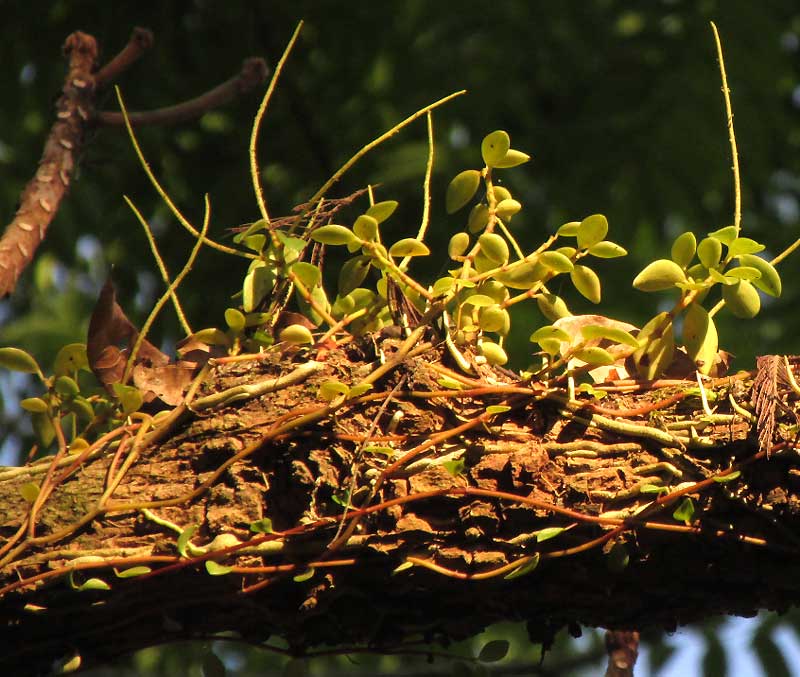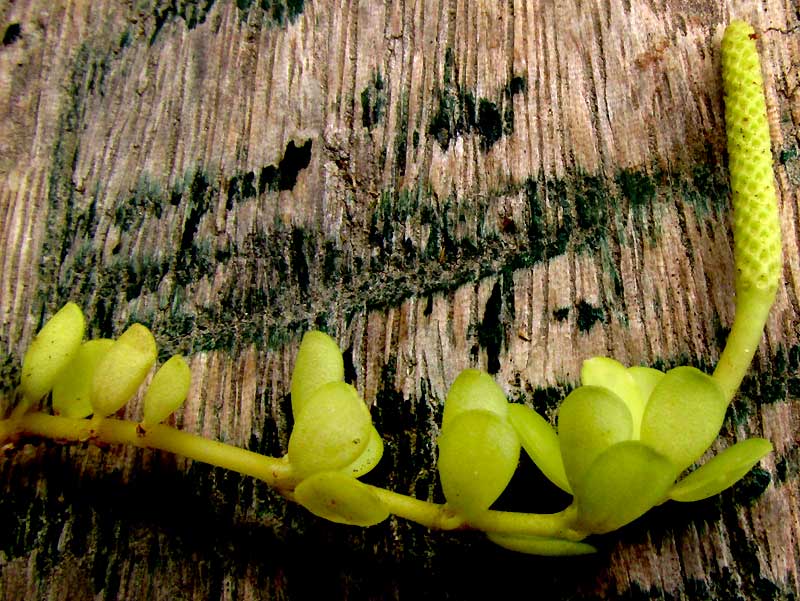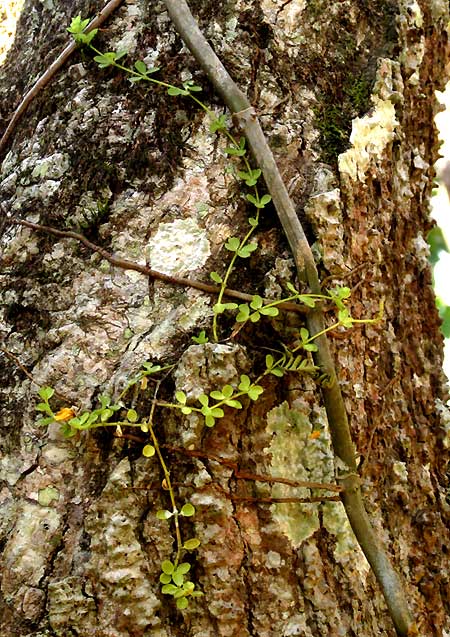Excerpts from Jim Conrad's
Naturalist Newsletter
Entry from notes taken on a March 28, 2019 camping trip in El Rosario National Park on the east side of Sayaxché, Petén district, lowland northern GUATEMALA
FOUR-LEAFED PEPEROMIA

Peperomias are small, often succulent herbs mostly growing on trees, though up north sometimes they're grown in pots as attractive ornamentals. In much of the American tropics they're of very common occurrence, though they're fairly uncommon in Mexico's arid Yucatan Peninsula, for peperomias like moisture. In what's left of the forest of northern lowland Guatemala, possibly the most commonly encountered species is the one sometimes called the Four-leafed Peperomia, PEPEROMIA QUADRIFOLIA, distributed from southern Mexico south through Central America into northern South America, and the Antilles. Atop this page you can see the distinctive appearance of one growing on a tree limb in El Rosario Park.
In that photo, good field marks for the species are shown by its small size, its rounded leaves' succulence, its lack of hairs, and the fact that at stem tips often four leaves arise at stem nodes, though farther back often there are only two. The slender items at the tip of most stems are spikes bearing many tiny, reduced flowers. In many peperomia species two or more flowering spikes arise together, but in Peperomia quadrifolia there's just one. Each flower, which consists of two stamens and a tiny ovary containing a single ovule (the future seed), emerges from behind a scale-like bract below it, the bract covering it during its immature stage. Below, an immature flowering spike at a branch tip shows nothing but the scales, though later the flowers will emerge.

Another view of a Peperomia quadrifolia just getting started, with no flowering spikes yet, is shown below.

There you see a different appearance, and it's true that over its large distribution area Peperomia quadrifolia displays many variations, especially in leaf shape and spike length. Often these variations have been described as new species and given new names, which now are considered taxonomic synonyms. Paul Standley and Julian Steyermark, in their 1952 "Flora of Guatemala" treatment of the peperomias' Pepper Family, the Piperaceae, (Fieldiana: Botany Vol. 24, Part III), wistfully remark on lumping into this one taxon, Peperomia quadrifolia, 24 collections just by William Trelease that had been marked as new species or varieties.
The succulent Peperomia quadrifolia has been reported as eaten, either raw or cooked, by the inhabitans of mountainous central Mexico, producing an aroma suggestive of coriander, called cilantro here. Another report from El Salvador concerns its use medicinally for skin ailments.